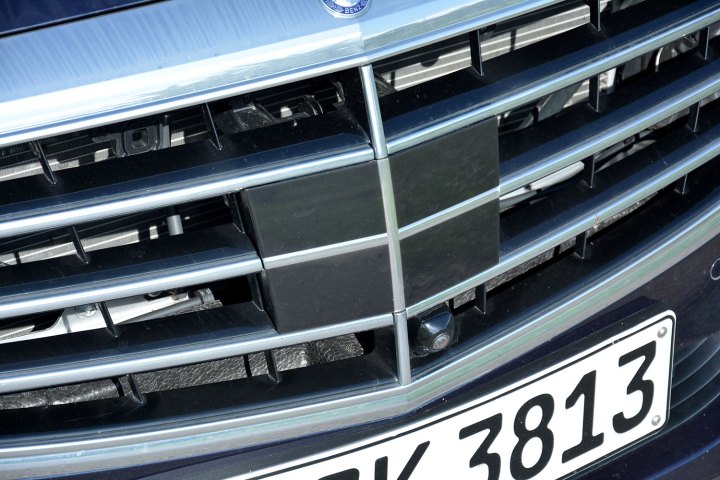
The system varies from manufacturer to manufacturer, but it’s typically built around a camera, a laser, or a radar that’s discreetly mounted either behind the rear-view mirror or somewhere on the front fascia, as pictured above on a Mercedes-Benz C-Class. It permanently scopes out the road ahead and warns the driver if it senses that a collision with another car is imminent, and it automatically applies the brakes if the driver doesn’t react in time.
AEB became available on a handful of cars — including a few Mercedes and Toyota models — in the early 2000s, and the technology has been trickling down to the rest of the industry ever since. It’s offered on a majority of new cars today, but it’s usually a stand-alone option or bundled into a costly option package that includes other electronic driving aids such as adaptive cruise control and lane-keeping assist.
The companies that signed the agreement represent 99 percent of the new car market in the United States. The list of participants includes BMW, Toyota, Honda, General Motors, Ford, BMW, Mercedes-Benz, the Volkswagen Group, Honda, Hyundai-Kia, Jaguar-Land Rover, Fiat-Chrysler, Volvo, Tesla, Subaru, Nissan, Mitsubishi, and Mazda. The broad list ensures that consumers will benefit from AEB regardless of whether they spend $16,000 on a Nissan or $160,000 on a Porsche.
The National Highway Traffic Safety Administration (NHTSA) has applauded car makers for making a historic commitment.
“We’re getting these safety systems into vehicles much faster than what would have been otherwise possible. A commitment of this magnitude is unprecedented, and it will bring more safety to more Americans sooner,” explained NHTSA Administrator Dr. Mark Rosekind in a statement. The agency added that the companies’ effort will prevent approximately 28,000 crashes and 12,000 injuries.
Notably, the 2022 deadline only applies to cars and trucks with a gross vehicle weight rating (GVWR) of 8,500 pounds or less. Automakers have until September 1, 2025, to make automatic emergency braking technology standard on trucks whose GVWR lies between 8,500 and 10,000 pounds.



